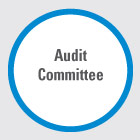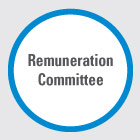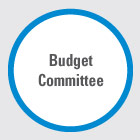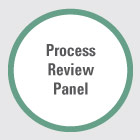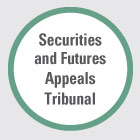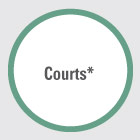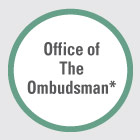During the year, we continued to work within our governance framework, applying the guiding principles to our work.
We are accountable to the Government and the public as to how we exercise our statutory powers, deploy resources and carry out our regulatory functions. The reviews and examinations carried out under the control framework during the year are set out below.
In addition to yearly financial disclosure in the annual report, we publish our financial statements every quarter. Our budget was submitted to the FS for approval and tabled before the Legislative Council (LegCo).
During the year, we regularly attended meetings at the LegCo to explain to its members issues of public concern and policy initiatives. Apart from attending meetings convened by the Panel on Financial Affairs, we also discussed draft legislation at meetings held by the designated bills committees and a sub-committee.
Transparency
To enhance transparency of our work, we engage the industry and stakeholders, seek their views and advice and conduct consultations.
The Advisory Committee was established under the statute to offer insight into policy matters. We have also established various consultative and regulatory committees to communicate and interact with different stakeholder groups. Such committees allow the SFC to explain policies to external stakeholders and to collect their views. The composition and terms of reference of these committees are set out in Committees, Panels and Tribunal. The Products Advisory Committee was formed last year to advise on the revised product code issues.
The process of consultation is a key channel for us to gauge public views on any regulatory changes. Proposed changes, public comments and the subsequent conclusions are published on the SFC website. While required by law to consult on rule changes, we also go beyond the statutory requirement to seek industry input on possible amendments to non-statutory codes and guidelines.
Last year, we conducted six public consultations, some of which sought input on proposed changes to codes including the Codes on Takeovers and Mergers and Share Repurchases, Corporate Finance Adviser Code of Conduct and Guidelines on Competence.
As ongoing dialogue on major market issues and key policy matters, we attended various briefings and meetings with the FS, the Secretary for Financial Services and the Treasury and the Financial Services and the Treasury Bureau (FSTB). In addition, we liaised with lawmakers on legislative amendments and with other regulators and Hong Kong Exchanges and Clearing Ltd on regulatory, supervisory and development issues.
As part of our communication with the industry, we issue technical publications and press releases, participate in conferences and seminars and meet regularly with industry participants.
We held eight media briefings and arranged numerous interviews with key SFC executives. During the year, we issued 161 press releases on different aspects of our work and released two versions of a corporate video online to explain our roles and duties to the general public and the industry respectively. In May 2010, we launched a debut mini television series entitled “SFC in Action”, which depicted the SFC’s enforcement work in a dramatised manner.
Code of conduct
We adhere to the Code of Conduct which stipulates the standards of behaviour expected of directors and staff and their legal obligations, such as the preservation of secrecy and avoidance of conflicts of interest, as well as matters including personal investments and corrupt practices. Internal financial control processes have been put in place to ensure that financial resources are duly and properly managed.
In terms of business dealings, transparent and fair tendering process and control procedures are in place to cover matters such as the appointment of consultants and the selection of vendors.
Procedures are posted on our website for lodging complaints against our staff and the SFC. Internally, procedures have been established for persons engaged by or work at the SFC to express their grievances or report improprieties.
To foster a professional and ethical culture, the “Living our values” programme was launched during the year to promote the core organisational values of being professional and proactive, and that people count.
Managing risks
For the integrity of our operating environment, contingency plans and resumption measures are put in place.
The operational divisions regularly report to the Board their analysis and recommendations on the management of risks that might affect the industry and the orderly functioning of the markets. Policies and procedures are in place to address readily identifiable risks, including various emergencies and technological glitches.
To be prepared for the handling of emergencies affecting the markets, we continued to review annually business resumption plans covering fires and natural disasters, etc to ensure business continuity or recovery.
Using robust information security controls such as virus detection and preventive tools, we continue to monitor our information technology systems for viral attacks and possible breakdowns, performing regular backup, data and server recovery plans. During the year, we upgraded the computer systems to eliminate any single point of failure. We also refined the “Uninterrupted Power System” to support extended system operation during power outages and strengthened our Internet gateway to ensure secure and uninterrupted communication with our stakeholders.
